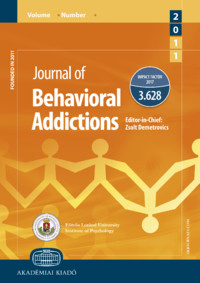Eating disorder characteristics among Hungarian medical students: Changes between 1989 and 2011
Eating disorder characteristics among Hungarian medical students: Changes between 1989 and 2011
Author(s): Ferenc Tury, Pál Szabó, Szilvia Dukay-Szabó, Irena Szumska, Dávid Simon, Günther RathnerSubject(s): Behaviorism
Published by: Akadémiai Kiadó
Keywords: epidemiology; eating disorders; anorexia nervosa; bulimia nervosa; time changes; medical students
Summary/Abstract: Background and aims. There are contradictory findings on time changes in the prevalence of eating disorders (EDs). The first epidemiological studies in Hungary were carried out in the late 1980s. The objective of the present study was to follow the changes in the prevalence of EDs in medical students after a period of 22 years. Methods. A questionnaire survey was conducted in 1989 and in 2010. The sample comprised medical students: 538 subjects (248 males and 290 females) in 1989 and 969 subjects (261 males and 708 females) in 2010. The questionnaire contained sociodemographic and anthropometric items, the Eating Behaviour Severity Scale, the General Health Questionnaire, the Anorexia Nervosa Inventory for Self-Rating, and the Eating Disorder Inventory (EDI). In the second wave, three subscales of the EDI-2 and the SCOFF questionnaire were added. Results. Current and desired body mass index were significantly higher in the second study. Binge eating at least once a week was reported less frequently (2.7% vs 6.8% in males, 6.1% vs 13% in females) in 2010. The proportion of subclinical anorexia nervosa was higher among females in 2011 (2.5% vs 0.3%, P < 0.01). Among males, the proportion of counterregulatory behaviours increased significantly (from 8.9 to 14.6%). Discussion and conclusions. The increase of the proportion of subclinical anorexia nervosa and that of male EDs may relate to the importance of the changes in the sociocultural background. Further representative studies are proposed in other countries of Central and Eastern Europe among medical students and in the general population.
Journal: Journal of Behavioral Addictions
- Issue Year: 9/2020
- Issue No: 4
- Page Range: 1079-1087
- Page Count: 9
- Language: English

